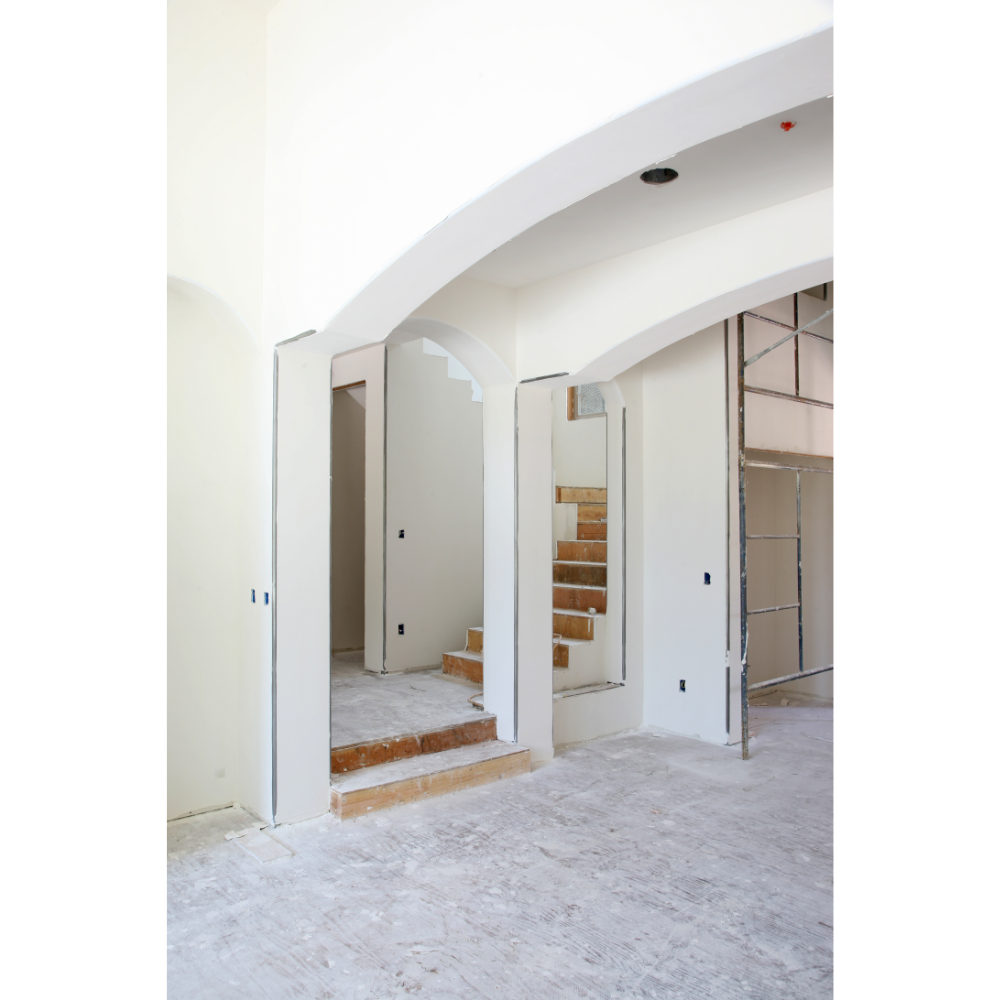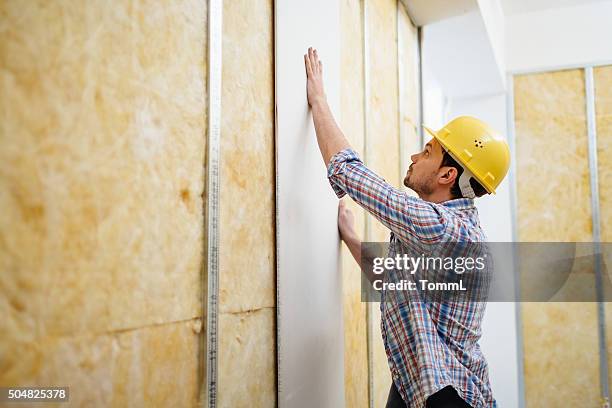Cutting-edge Strategies to Drywall Installation in Edmonton
Wiki Article
Whatever You Required to Know About Drywall Setup: A Comprehensive Overview

Comprehending Drywall Fundamentals
Recognizing the principles of drywall is essential for any kind of successful setup task. Drywall, likewise referred to as gypsum board or plasterboard, is a popular building and construction product made use of to produce interior walls and ceilings. It contains a gypsum core sandwiched in between two layers of paper. The gypsum core provides the needed stamina and strength, while the paper layers safeguard the core from damages and supply a smooth surface area for completing.
One crucial facet of comprehending drywall is understanding the various types readily available. One of the most common kinds consist of normal drywall, moisture-resistant drywall, and fireproof drywall. Regular drywall appropriates for most indoor applications, while moisture-resistant drywall is suggested for locations with high humidity, such as shower rooms and kitchen areas. Fireproof drywall is designed to provide additional defense against fire and is typically called for in business buildings and multi-family houses.
Another secret aspect of drywall basics is understanding the common sizes and thicknesses offered. The most common sizes are 4x8 feet and 4x12 feet, with densities ranging from 1/4 inch to 5/8 inch. Thicker drywall is generally used for applications that require boosted fire resistance or soundproofing.
Devices and Materials Needed for Drywall Setup
To effectively mount drywall, it is important to have the needed tools and products available (drywall repair). These devices and products are vital for accomplishing a specialist surface and ensuring the toughness of the setupFirst and foremost, you will certainly need a determining tape to precisely gauge the dimensions of the area where the drywall will certainly be installed. An utility knife is necessary for reducing the drywall to the needed shapes and size. In addition, a drywall saw can be made use of for making much more detailed cuts, such as around outlets or home windows.
Following, you will certainly require a screw weapon or a drill with a screwdriver bit to protect the drywall to the wall surface studs. Screws, specifically drywall screws, are essential for affixing the drywall to the studs. It is essential to use the suitable length of screws to make certain a flush and protected installation.

In terms of materials, you will need the drywall itself, joint compound for completing voids and joints, and tape for reinforcing the joints. Sandpaper or a fining sand block will be needed for raveling the joint compound after it has actually dried out.
Preparing the Area for Drywall Setup
Prior to continuing with the drywall installment, it is vital to effectively prepare the area to guarantee a smooth and successful installment process. Preparing the space involves several essential actions that need to be complied with vigilantly.Firstly, it is important to clear the area of any furnishings, components, or other things that may block the installation procedure. This will give the installers with enough space to work and steer around. Furthermore, it is recommended to cover the floorings and any type of continuing to be items with safety sheets or ground cloth to stop any type of damages or particles from dropping onto them.
Next, it is essential to evaluate the wall surfaces and ceiling for any type of existing damage, such as cracks, holes, or water spots. These problems need to be fixed before the installment to make sure a smooth and also surface area for the drywall. Any kind of loose paint or wallpaper ought to also be gotten rid of, and the wall surfaces must be completely cleaned and cleaned.
Moreover, electric and plumbing components ought to be turned off and secured to avoid any type of mishaps or damages throughout the installment process. It is essential to transform off the power supply to the area and eliminate any type of electrical cover plates prior to beginning the setup.
Finally, it is a good idea to seek advice from with a professional or describe local structure codes to ensure compliance with security policies and obtain any type of needed authorizations prior to proceeding with the setup. By properly preparing the space, you can ensure a successful and efficient drywall installment procedure.
Step-by-Step Guide to Hanging Drywall
To make sure a successful drywall installation, it is necessary to follow a step-by-step overview for hanging the drywall (drywall installation). This process requires accuracy and focus to informationFirst, collect all the required devices and products, consisting of drywall sheets, an energy knife, a drywall saw, a measuring tape, a drill, and screws.
Next, begin by measuring the measurements of the wall surface or ceiling where the drywall will certainly be mounted. Transfer these dimensions onto the drywall sheets, marking where cuts need to be made - Edmonton drywallers. Utilize a straight side and an utility blade to rack up the drywall along the marked lines, then break it along the rating line
Once the drywall sheets are cut to dimension, they can be held on the wall surface or ceiling. Beginning at one corner and position the first sheet up and down versus the framing. Use screws to protect the drywall to the studs, seeing to it to leave a tiny space between sheets for expansion.
Proceed this process, working your means across the wall surface or ceiling. Ensure that each sheet is level and flush with adjacent sheets. Make use of a drywall attended eliminate any type of necessary openings for electrical outlets or buttons.
Finishing Strategies for a Professional Appearance
Currently that the drywall sheets have actually been successfully hung, it is necessary to employ ending up strategies that will lead to a refined and specialist appearance. Achieving a smooth and perfect coating on drywall calls for mindful interest to detail and using appropriate tools and methods. One of the initial steps in the completing process is to fill the joints and screw impressions with joint compound. This can be done by applying a thin layer of substance over the joints using a taping knife, and afterwards embedding drywall tape into the substance. When the tape is in location, another layer of compound should be used over it, feathering the edges to develop a smooth shift. After the compound has actually dried out, it is essential to sand the surface to eliminate any flaws and create a smooth coating. A pole sander or sanding block can be made use of for this function. Lastly, the wall surfaces should be topped and painted to complete the finishing process. Using high-quality paint and using it uniformly with a roller or brush will guarantee a durable and expert surface. By complying with these completing techniques, your drywall installation will have a professional and polished appearance.Final Thought
In conclusion, recognizing the basics of drywall installment is crucial for an effective job. With drywall Edmonton this detailed overview, anybody can confidently deal with a drywall installment job.The most typical kinds consist of normal drywall, moisture-resistant drywall, and fireproof drywall. Routine drywall is appropriate for most indoor applications, while moisture-resistant drywall is suggested for areas with high moisture, such as kitchens and shower rooms. Screws, especially drywall screws, are essential for affixing the drywall to the studs. These problems should be fixed prior to the installation to make certain a smooth and also surface area for the drywall. By complying with these finishing strategies, your drywall installation will certainly have a refined and expert appearance.
Report this wiki page